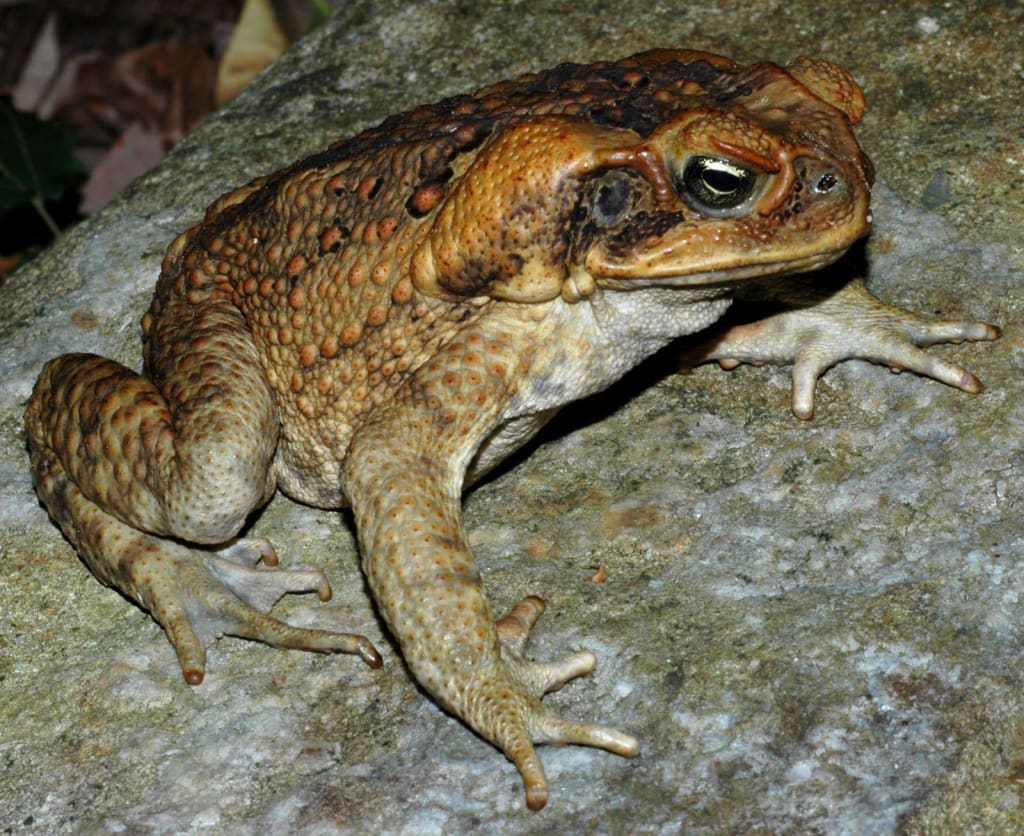Content warning
This story may contain sensitive material or discuss topics that some readers may find distressing. Reader discretion is advised. The views and opinions expressed in this story are those of the author and do not necessarily reflect the official policy or position of Vocal.
Cane toad explosion in Florida.
Very harmful to dogs!

Cane toads are considered to be residing in central and south Florida. The Florida Fish and Wildlife Conservation Commission (FWC) provides educational materials, regular outreach and technical assistance for homeowners experiencing problems with cane toads. The FWC encourages property owners to remove cane toads whenever possible, and information and links on proper species identification, ways to reduce attracting this species to your yard, and how to humanely kill cane toads are available on the FWC website. Win Everham, FGCU Professor of Ecology and Environmental Studies said, “As we often have, we have a problem with species, we bring in a species from someplace else, and the solution becomes a new problem.”
This species is not only an invasive animal, it is also dangerous to our ecosystem.
“The problem with exotic species is that they eventually become explosively dominant on their landscape. And when you have too much of anything, it’s a problem.” Everham said, “They negatively impact our frog species. Our frog species are depressed.” Flavelle said the most toads he has ever caught in a span of three and a half hours was 518 toads.
These toads will eat anything they can get in their mouths like bugs, lizards, and baby birds.
Flavelle also looks for tadpoles when he’s on a hunt in an effort to keep the canes from ever growing up.
They can breed year-round in standing water, ponds, and canals. They’re invasive, but Everham warns, that they shouldn’t be confused with the much smaller, native southern toad.
“We don’t want people killing every frog they see. We don’t want them killing every toad they see,” Everham said Additionally, captive-held cane toads are regulated as Class III wildlife in the State of Florida. A permit is not required to possess cane toads as personal pets. However, a License to Possess Class III Wildlife for Exhibition or Public Sale must be obtained to possess these amphibians for commercial use and a Captive Wildlife Importation Permit is required to import this species into the state. Cane toads breed along the edge of freshwater ponds and lakes between March and September, and the eggs look very similar to native toad eggs.
They eat native frogs, toads, insects and other species, and compete with native animals for hunting and breeding space.
But they're most notorious for poisoning domestic animals, particularly small dogs.
Cane toads aren't venomous like a rattlesnake but they do produce a type of poison that can cause serious neurological issues and even death. Toad toxins are highly poisonous to cats and dogs, and many have been killed after grabbing the toads with their mouths. Symptoms of toad poisoning in pets include drooling, loss of coordination, head-shaking and convulsions.
If poisoning is suspected, use a hose and run water in the side of the mouth, flushing the toxin out and not down the throat while pointing the head downward, the University of Florida. Cane toads tend to be more active at night, and can sometimes be seen in large numbers on streets and sidewalks.
They appear to be drawn to light sources, which draw in bugs.
Keep all pets indoors at night if possible. Watch them at all times if they must go outside during night hours. It's practically impossible to keep all toads off your property, but it helps to have tightly-woven fencing around the perimeter of your property.
There are local exterminator companies, and you can hire people to come and remove toads from your yard.
But the toads will likely return eventually.
If your pet grabs one you need to flush its mouth out, wipe its gums and tongue with a towel remove toxins and get to a vet.
About the Creator
Enjoyed the story? Support the Creator.
Subscribe for free to receive all their stories in your feed. You could also pledge your support or give them a one-off tip, letting them know you appreciate their work.





Comments
There are no comments for this story
Be the first to respond and start the conversation.